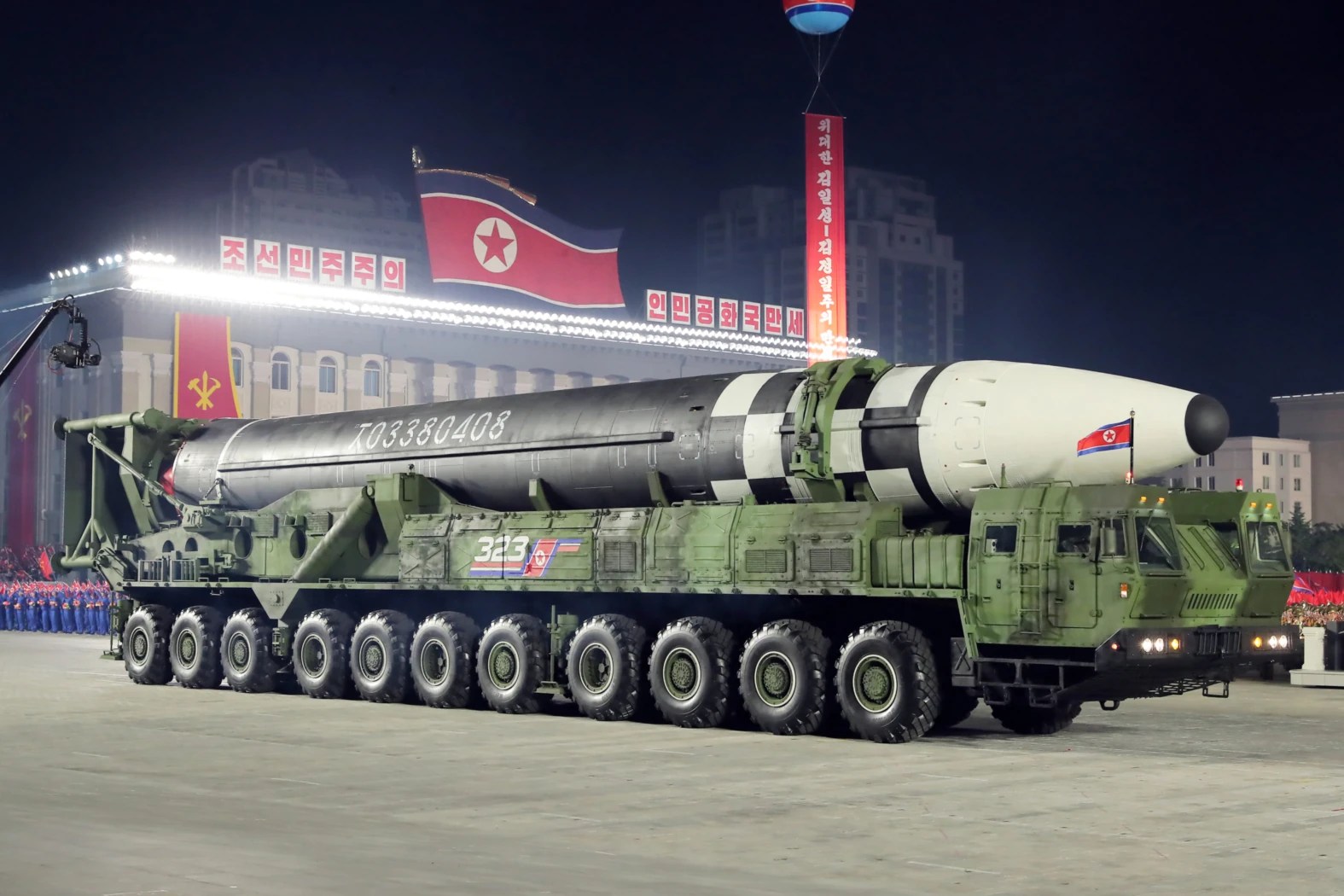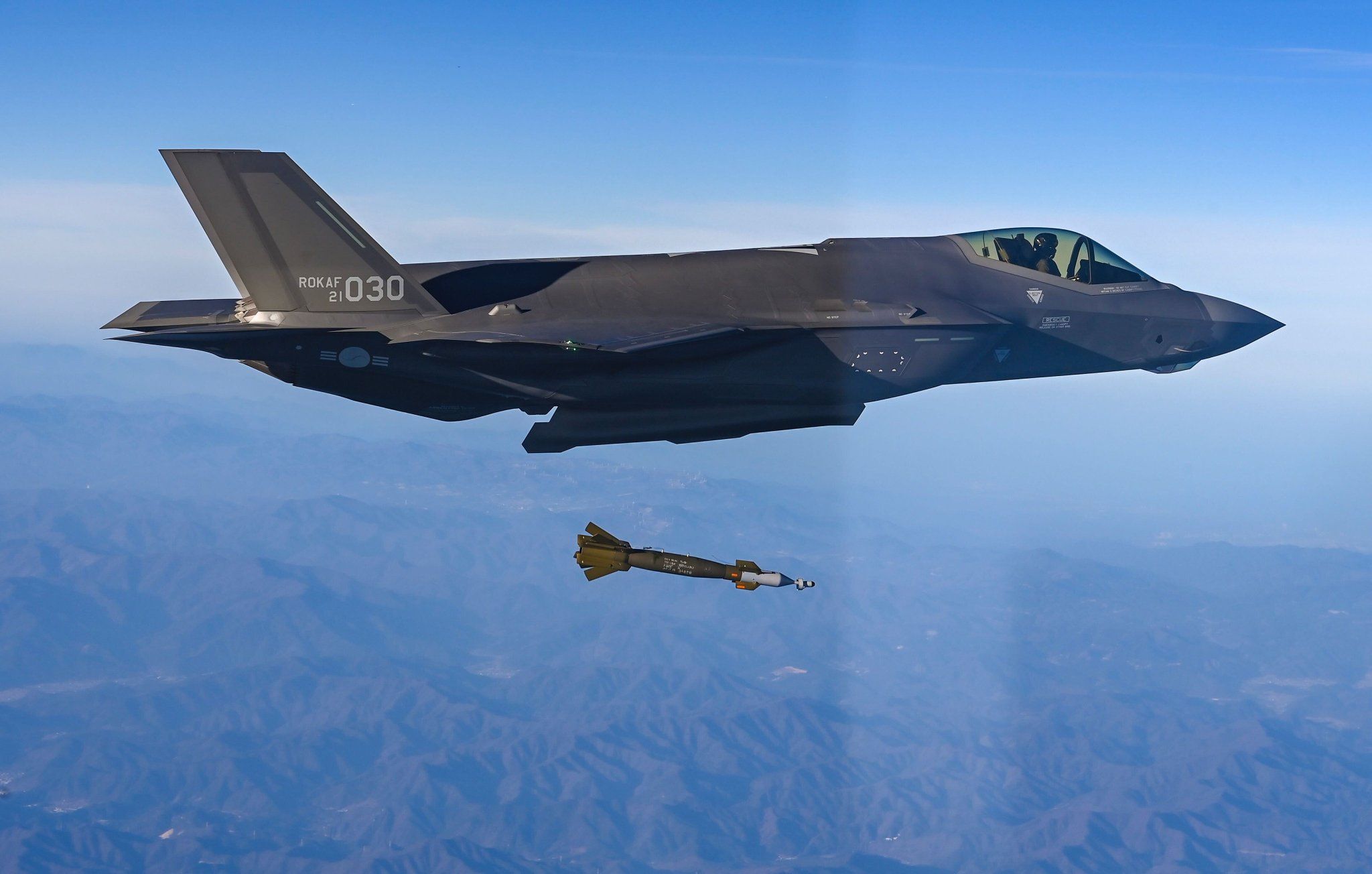After Pyongyang reportedly fired an intercontinental ballistic missile that appeared to be a Hwasong-17 on November 18, South Korean and US fighter fighters were dispatched to rehearse the bombing of North Korea’s missile launch facilities.
According to the joint chiefs of staff of the South Korean armed forces, four South Korean F-35A jets and four US F-16 fighters flew in a coordinated assault formation over the sea to the east of the Korean Peninsula.
The Joint Chief also announced a mock drill for attacking North Korea’s ground-launch facilities with GBU-12 airborne laser-guided bombs to show that they were prepared “to strike the adversary with precision.” The bombing mock drill was reportedly conducted at a firing range in Gangwon Province.
The intercontinental ballistic missile fired by North Korea reportedly traveled about a thousand kilometers before landing in the sea over 200 kilometers away from Japan. However, the Japanese Defense Minister stated that the intercontinental ballistic missile had a range sufficient to strike the entire mainland of the United States.
In response to North Korea's ICBM launch on Friday, South Korea & #US conducted a combined attack squadron formation flight.
SK's F-35As conducted exercises & dropped laser-guided GBU-12 bombs on a dummy transport erector launcher target. pic.twitter.com/JcTS8vEFum— Conflict Watch PSF (@AmRaadPSF) November 18, 2022
The Japanese Defense Minister, Yasukazu Hamada, told reporters that the missile’s altitude suggests it was launched at a high angle and that, depending on the weight of the warhead, it has a range of more than 15,000 kilometers (9,320 miles), “in which case it could cover the entire mainland United States.”
Over the last two months, North Korea has launched over 50 missiles, most of which were short-range. These more uncommon long-range launches directly endanger the US because the missiles can deliver nuclear warheads to any location on the US mainland.
North Korea had been irked by the large-scale aerial drills conducted by the US and South Korea earlier this month, involving 240 aircraft running mock aircraft attacks.

After condemning the unprecedented missile launch, the United States and its regional ally South Korea began mock drills to practice bombing North Korean missile facilities.
North Korea had said in its previous missile tests that some of these were simulations of nuclear attacks on South Korean and American targets. This is precisely why the US started mock air drills almost immediately. However, the most significant is the use of laser-guided bombs.
Precision Bombing Of Missile Launchers
South Korea’s Joint Chief of Staff stated that the drills aimed to “demonstrate the ability of (South Korea’s) F-35 fighter jets with advanced stealth capabilities, to stealthily approach a target without being detected by the enemy and precisely strike the target.”
The South Korean Air Force’s F-35A stealth fighter jets held the exercise striking North Korea’s Transporter Erector Launcher vehicles with GBU-12 aerial laser-guided bombs, the Joint Chiefs of Staff (JCS) announced. South Korea had received the GBU-12 bombs from the US as part of the F-35A package.
The GBU-12 laser-guided bomb is an American aerial bomb based on the Mk 82 500-pound general-purpose bomb but with an additional nose-mounted laser seeker and fins for guidance. It is a laser-guided, free-fall bomb designed to hit ground-based targets from a stand-off or short range.
A target is illuminated by the operator using a laser designator, and the munition is then guided to a spot of laser light that the target has reflected. Each bomb has a laser guidance kit to add the necessary level of precision.

The kit comprises an airfoil group at the back of the weapon and a computer control group at the front. The guidance fins (canards) respond to signals from the control group when a target is illuminated by a laser, either airborne or ground-based, and direct the weapon to the target. The lift and aerodynamic stability of the wings on the airfoil group are essential for in-flight maneuvering.
The dual-mode Enhanced-GBU-12 [EGBU-12] guided bomb is made to work well in all kinds of weather. Enhanced Paveway II includes a laser guidance system and an inertial navigation system with GPS assistance to provide a single precision-guided weapon for all circumstances.
The resulting dual-mode capability offers inclement weather GPS navigation and precise laser guidance when necessary for moving objects.

The bomb is compatible with the F-35 stealth fighter jets of the South Korean Air Force and the F-16 Fighting Falcons. Back in 2006, two F-16C fighter jets dropped a GBU-12 laser-guided bomb along with a GBU-38 and destroyed the terrorist hideout where wanted Al Qaeda terrorist Al-Zarqawi and his peers were meeting.
By launching mock drills just hours after the ICBM launch, the two allies told North Korea that any missile strike on either of their countries would obliterate North’s missile facilities. Using GBU-12 bombs in any such exercise would mean annihilation with absolute precision.
However, North Korean missile launches have almost always been responded to aggressively by the US and its regional allies by increasing military presence in the region or conducting widespread drills. Both are seen as a provocation by Pyongyang, as it has been asserting for a long time.
- Contact the author at sakshi.tiwari9555 (at) gmail.com
- Follow EurAsian Times on Google News




